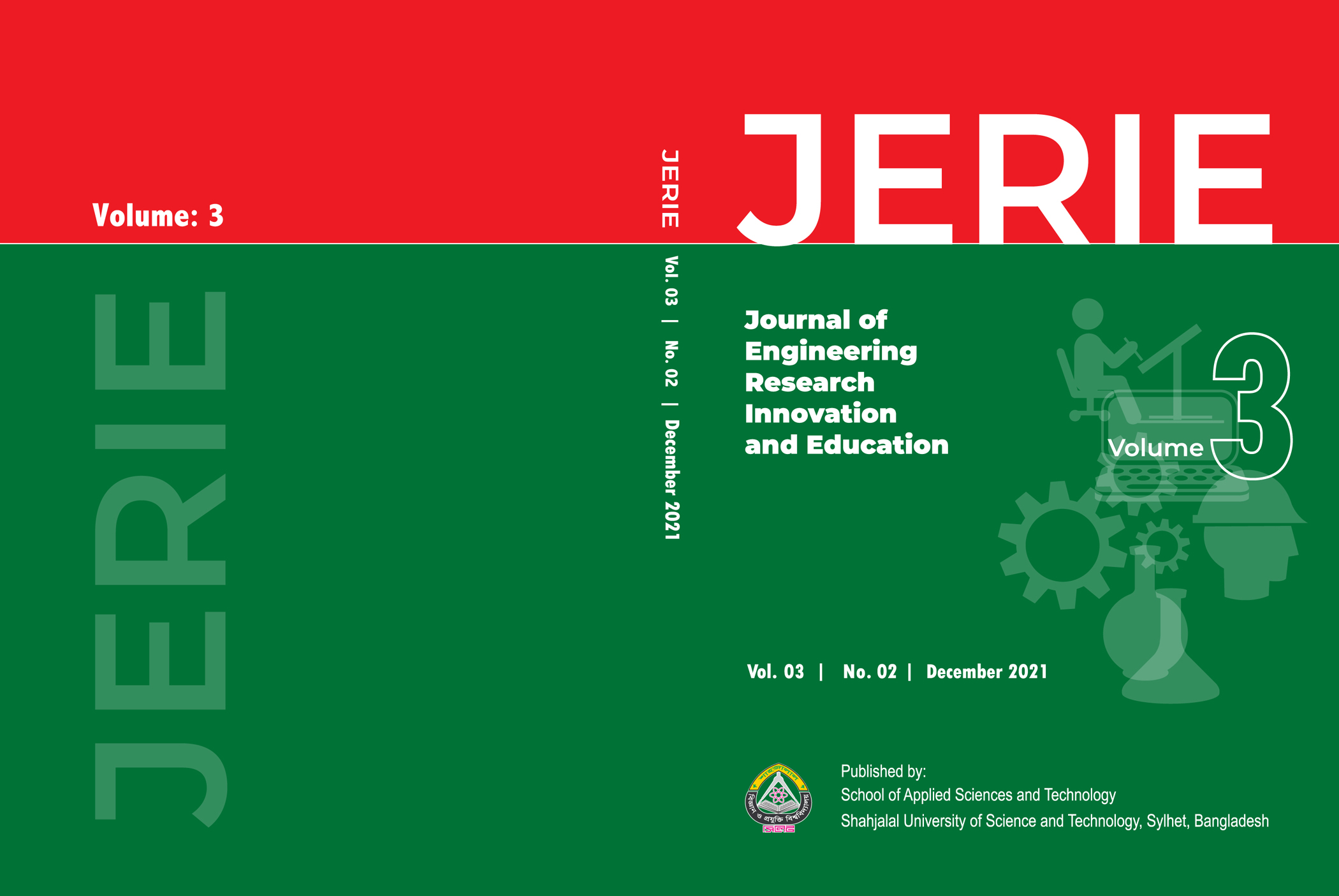A Study on the Efficiency of Permeable Concrete with Scrap Tire Rubber
Corresponding Author : M.I. Kabir (imran.kabir-cee@sust.edu)
Abstract : With the advancement of civilization, the volume of polymeric wastes, for example, tire rubber is expanding at a quick rate. This study attempts to utilize this discarded tire rubber to produce permeable concrete for stormwater management in urban area facilitating water sensitive urban design and to compare it with the conventional permeable concrete. In this study, 5%, 10% and 15% coarse aggregate are replaced with shredded tire rubber (as w/w ratio) maintaining a constant water cement ratio of 0.32. It…
Rethinking Urban Retail Spaces due to Covid-19 Pandemic in the context of Sylhet, Bangladesh
Corresponding Author : Mohammad Tanvir Hasan (tanvir-arc@sust.edu)
Abstract :
Maintaining social distancing is currently an ultimate prerequisite to evade the crowd owing to the Covid-19 pandemic in public spaces like marketplaces, retail shops, parks, and streets. Adopting social distancing is quite thought-provoking mostly in public buildings in Bangladesh since the building design concept allure public gathering, more accessibility, and shared facility. Retail spaces like markets and shopping malls are one of the centers of public crowds where people commonly share facilities and circulation significantly. Apart from social distancing, there…
Evaluate Bearing Capacity of Fixed Type Sand Compaction Pile (SCP) in Clay with the Variation of Clear Distance between Two Successive Piles
Corresponding Author : Md. Foisal Haque (mfh.civil@gmail.com)
Abstract :
Sand compaction pile (SCP) is the economic and less time-consuming technique of ground improvement for most of the countries concerning other piling methods based on the historical data and it is used for the replacement of cast-in-situ, precast, timber, and composite piles. The installation method of SCP is easier and faster than other methods because of less unit weight and no additional materials are inserted during construction. Square patterns of SCP are most suitable and easier to construct than others…
Stabilization of Weak Power Grid using Renewable Energy Source with Droop Controller
Corresponding Author : Ifte Khairul Amin (iftekhar-eee@sust.edu)
Abstract :
As the world population is growing fast, the demand for electricity in our daily life is also increasing rapidly. To meet the high demand and fight against global warming worldwide, use of renewable energy sources seems the inevitable choice. In the last few decades, the use of renewable energy has increased immensely. Our country is not an exception to that. Though the government has taken many initiatives to send electricity to the most remote corners of the country, yet due…
Conductive Polypyrrole Composite: Preparation and Characterization
Corresponding Author : Md Mostafizur Rahman (mostafizur.cep@gmail.com)
Abstract :
This study highlights on synthesis of conductive polypyrrole (PPy) composites and application in the development of supercapacitor. PPy was synthesized using FeCl, as an oxidant in aqueous medium. Polypyrrole composite were synthesized with ZnSO,, NiCl,, MgCl,, Cuci, Sodium Dodecylbenzene Sulfonate (DBŞNa) in various compositions. The experimental result showed that the polypyrrole composite exhibited higher electrical conductivity compared to polypyrrole. Among Polypyrrole composite containing different inorganic and organic salts, DBSNa-PPy composite showed the highest electrical conductivity of 25 S/cm and capacitance…
Evaluation of a Sustainable Effluent Treatment Plant for Textile Industries
Corresponding Author : Muhammad Abdus Samad (samad-ipe@sust.edu)
Abstract :
Textile industries in Bangladesh produce a great amount of effluents, as a byproduct. Despite many regulations set by the DoE to make sure that the textile factories treat their effluents according to the quality standards, many of the existing textile factories do not follow it. Some of the main reasons for not following regulations include the lack of financial resources, and lack of knowledge, and lack of expertise in maintaining an effluent treatment plant. This work aims to provide a…
Company Readiness towards Green Manufacturing - A Case Study in Readymade Garments
Corresponding Author : Mst. Nasima Bagumn (nasima-ipe@sust.edu)
Abstract :
Green manufacturing processes mitigate environmental pollution, save energy and maximize resource efficiency. Nowadays, Readymade garments are showing increased attention in achieving Leadership in Energy & Environmental Design (LEED) certificate. However, LEED certification requires high initial investment and low profit at the initial stage. LEED comprises factors to alleviate energy and resource consumption in building design, transportation, and water usage. However, green manufacturing also requires criteria such as the participation of stakeholders, waste minimization in the production, sourcing and selling green…
